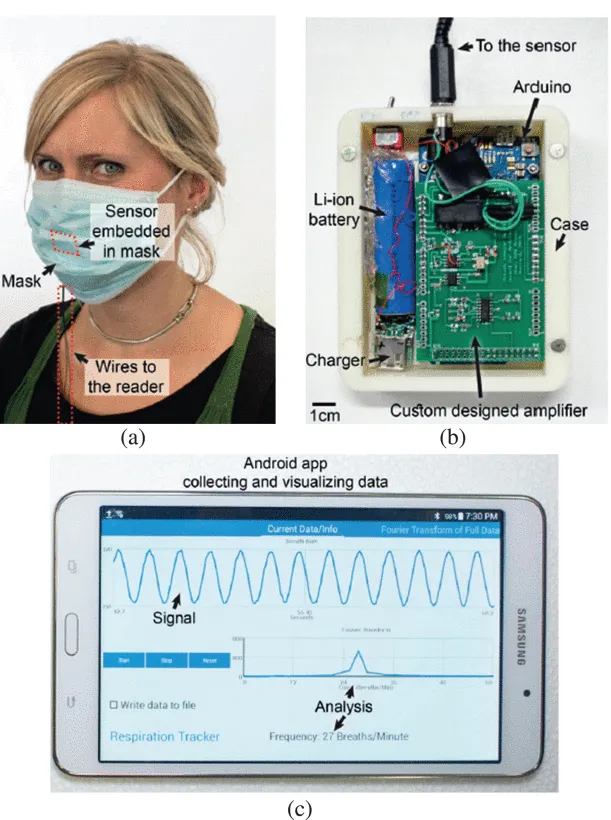Contact and Remote Breathing Rate Monitoring Techniques: A Review
Respiratory rate (RR) can be monitored by contact monitoring and remote monitoring techniques. When at rest, a human being breathes around 12-20 breaths/minute. It changes during illness, especially where lungs are involved, like Chronic obstructive pulmonary diseases (COPD) and COVID-19. Any abnormality in respiratory rate (RR), like, Tachypnea (high respiratory rate), Bradypnea (low respiratory rate), or Apnea (cessation of breathing), could be detected, and life’s saved by monitoring it.
Contact monitoring involves sensor integration with a patient’s body, clothes, gloves, mask, bed, etc. Exhaled air generally has a higher pressure, temperature, CO2 concentration, and humidity value than inhaled air. It makes it possible to detect the RR by tracking breadth near the nasal opening using an array of sensors like wearable temperature sensors (e.g., thermistors), MEMS (Micro-electromechanical systems) based pressure sensors, CO2 gas sensors, and humidity sensors.
An acoustic system can also detect the abnormal sound from the patient’s chest caused by respiratory abnormalities and can be processed further to get RR. Piezoelectric transducers (ultrasound-based), accelerometers, and gyroscopes can be used to measure the volumetric change of the body during respiration. Magnetically coupled devices can also be used to detect bioimpedance fluctuation in the lungs during respiration through modulation of its coil frequency.
Remote techniques involve radiative processes like infra-red, radar, or ultrasound-based detection. For sleep apnea detection, remote-based ultrasound techniques are more commonly used. Infra-red thermography tracks the region of interest and monitors temperature near the nasal openings to detect RR. Charged-coupled device (CCD) cameras and 3D vision sensors are also used in video-based monitoring to detect volume changes in the chest and abdomen due to respiratory rhythms. Radar-based technologies can also detect this movement.
Continuous Wave (CW) Doppler radar, Laser Doppler Vibrometer (LDV)-Based Radar, ultra-wideband (UWB) pulse radar, and frequency-modulated continuous-wave (FMCW) radar are also explored for RR monitoring techniques. This technique uses the difference between the transmitted wave and the modulated received wave to determine the change in volume. CW doppler radar uses radio frequency (RF) signals whose frequency or phase is modulated by the physiological movement during breathing.
LDV is an optical technique that can measure surface displacement and velocity by doppler shift. UWB frequency radar has less noise due to interference (except at Wi-Fi frequency), low power dissipation, and better compatibility with the existing narrowband link. In the FMCW technique, the chest wall movement is determined by the frequency shifts in emitted signal over time.
The obtained signal from the sensors can further be processed using electronic circuits (Analog to Digital Converter, microprocessor, and machine learning for feature extraction). Fast Fourier transform, time-frequency analysis, and continuous wavelet analysis are commonly used signal processing algorithms for an accurate estimate of RR.
Contact and remote breathing monitoring have both advantages and limitations. The remote respiratory monitoring system makes it possible to monitor COVID-19 patients remotely. Remote methods are more comfortable than contact monitoring, allowing a natural breathing pattern and giving a more accurate result. However, remote methods are complex, and patients' movements influence the reading. The radar-based monitoring is prone to noise from nearby objects, but it is simple, immune to ambient conditions, and less expensive than other remote monitoring methods.




